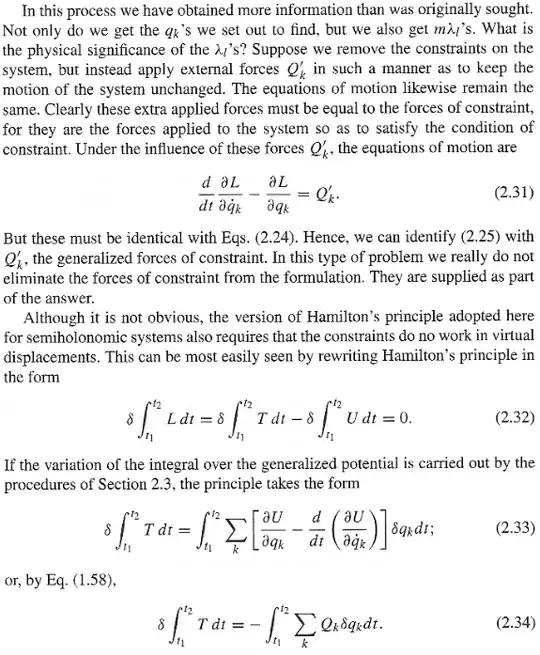Insofar as learning Classical Mechanics is concerned, I found Taylor to be much better than Goldstein for initial forays.
A force of a holonomic or semi-holonomic constraint is one that does work only in the direction of a conserved coordinate. One way to find such coordinates is to test the derivative of the "momentum" term in the Lagrangian $\frac{dL}{dq'_k}$ (where $q'_k$ is the time derivative of $q_k$).
If this quantity is a constant, then $q_k$ is a conserved (or ignorable) coordinate, and the force in that coordinate direction is $0$ (as force is defined in Newton's Second Law as the time derivative of momentum). This coordinate is therefore eliminated from your equations of motion. The remaining coordinates $q_k$ stay in your equations, but your forces of constraint $f_c$ have no effect on their motions.

